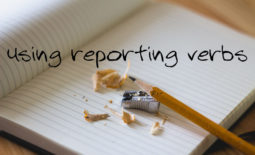What’s wrong with templates?
When preparing for an English speaking test, especially a very structured test like TOEFL, students are often tempted to follow a “template.” That’s a specific formula that you can use to help structure your response. Many websites and even some English teachers will provide you with templates. Some of these consist of simple phrases or transition words like “First of all …” or “In my opinion …” These are fine. But others contain whole sentences in which you “fill in the blanks,” as for example, “In the listening material, the man and the woman are discussing a problem. The man’s problem is that —–.” These are definitely not so great and can negatively affect your score.
So what’s wrong with using a detailed template?
Here’s the problem. Templates are like crutches. When you see someone with crutches, you know that they can’t walk on their own. They’re not independent. They need help and assistance to get around.

Templates basically fulfill the same function. Speakers who aren’t confident, who aren’t independent, and who feel they need help and assistance tend to use templates. Using a template is like holding up a big sign saying, “I can’t speak English very well. I need this template so I can answer the question!” And that’s not the message you want to send to your rater.
So how can you resist the temptation of templates?
First of all, I’d say avoid any website or teacher that tries to give you a really structured formula for your answers. They are providing you with misinformation that is not going to improve your speaking score.
Second, work on your overall speaking proficiency. I know that sounds vague, but try to remember that TOEFL is a test of English fluency, not of how well you can memorize formulas. If you are taking TOEFL, you probably have a goal to study or work in an English-speaking country. When someone there asks you your opinion of a movie, or how you would deal with a difficult team member, or what an academic lecture was about, you aren’t going to be able to answer with a template.
Finally, practice, practice, practice … without using a template. Take advantage of the structure of the test. Since the speaking questions follow the same basic pattern, you have some idea of what to expect. Develop your own individual way of answering the questions, just making sure that you try to answer the questions clearly, coherently, and completely.




